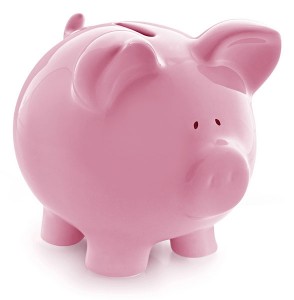Happy Monday, Tranquilistas! As you know by now, $ense & $ensibility Mondays are all about living large on a budget. So far, I’ve shared some tricks and tips with you about ways to save while living large, but I haven’t yet talked with you about the budget part of equation. I promise it’s not as boring and tedious as it sounds!
Budget Basics
We all need to know what our budgets are, however small or large, so that we can live within our means and be able to plan for our futures. If you want to start saving up for retirement, or put a down payment on some property or a car, or if you have some debt you need to pay off and want to do it faster, where is the money going to come from?
Maybe you’re already in control of your budget. If that’s the case, congratulations! Good on you! If you’re not, or if it’s been a while since you’ve figured out your budget and some variables have changed, it’s time to examine your financial life so that your real life can be fabulous! Over the next few weeks, we’ll look at what it takes to build a budget and use it.
Your Style
To make a budget, you need to first know your style – your spending style, that is. Your spending can be divided into two categories: necessity and discretionary spending. Today we’ll look at what makes up necessity spending.
Necessities
As the name suggests, necessities are the living expenses you HAVE TO make. And while I know from experience that your haircut and highlights might sometimes seem like a necessity, they’re really not, ladies! Necessities are:
-Rent/Mortgage
-Taxes (you have filed your 2009 taxes, haven’t you?)
-Insurance (medical, homeowners/renters, etc)
-Transportation (either expenses for automobiles – loans, insurance, gas, maintenance – or bus & subway passes)
-Credit card debt payments
-Other debt payments (student, home equity, etc)
-Utilities
-Phone
-Child Support and/or Alimony
-Groceries
-Medical expenses
-Savings, Investments, and Retirement Savings
Chic Chart
Chart out your Necessities (I really like the
charts Catey Hill came up with for
Shoo, Jimmy Choo!). Look at how much you spend on these expenses per month. Obviously, you want to make sure it’s less than what you’re bringing in. If it’s not – fix that right away! Do you really need 1,000 cell phone minutes a month and unlimited texts, or can you cut your plan down? How much are you spending a month on groceries? How much of this food is going to waste or can be bought more cheaply? Do you really need to drive to work, or would public transportation be cheaper (or vice-versa!)? Or maybe you’re perfectly happy with how much your Necessities are costing you. Either way, at least you now know exactly how much you spend on these items. Knowledge is power!
Next post: Discretionary Spending! Exciting (and often eye opening)!
Related

